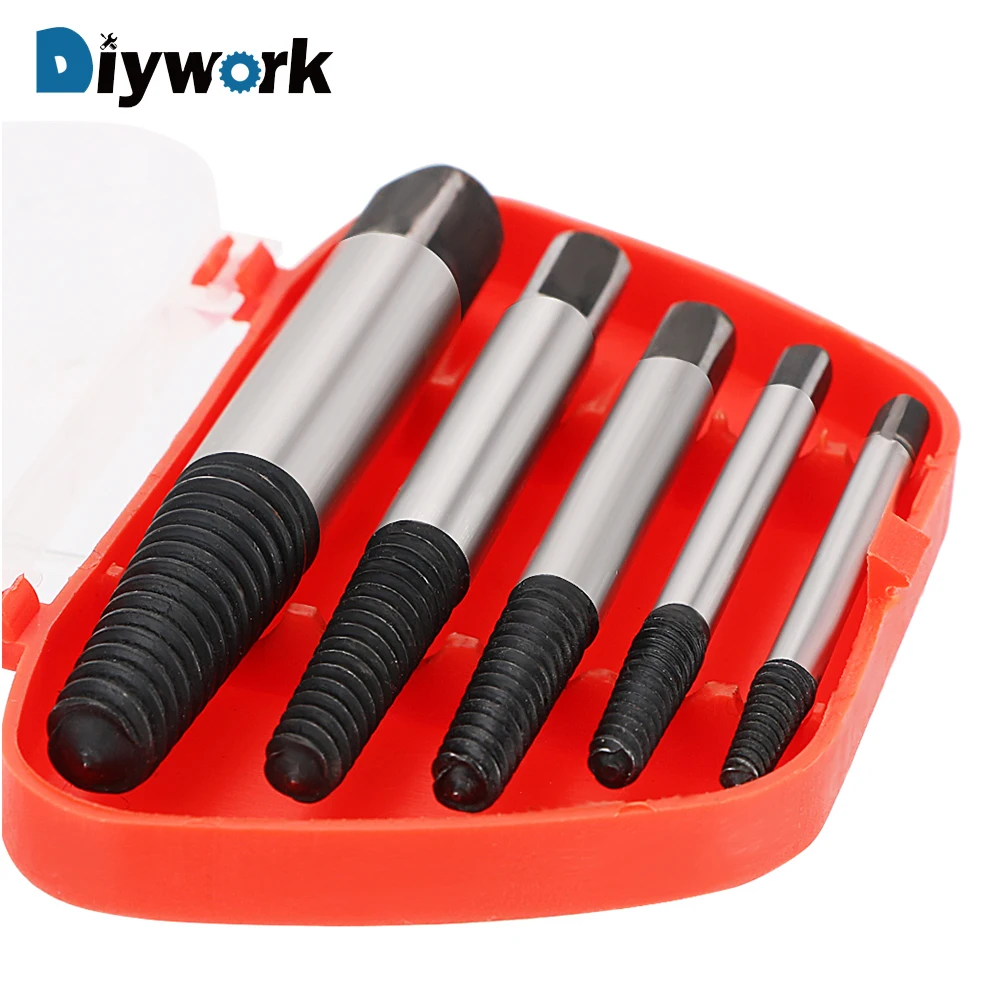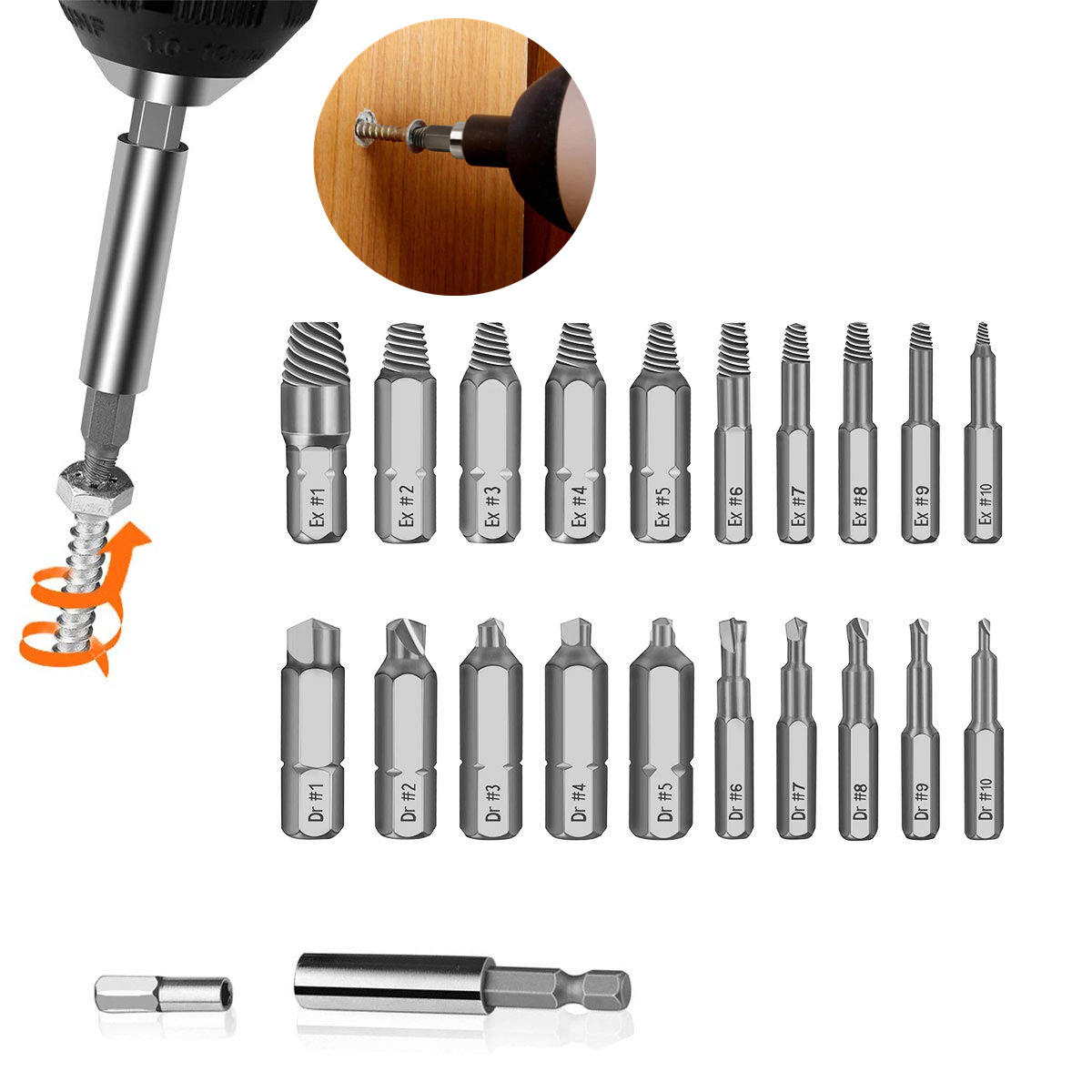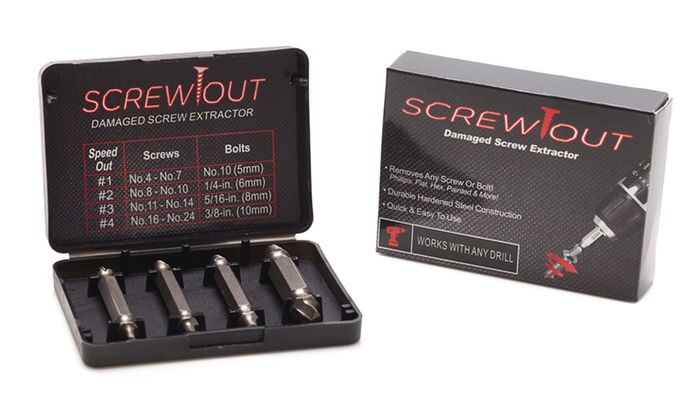
Screw extractors are not without their own problems. The stub remover should dig in tight and un-turn the bolt. 6/ Turn anti-clockwise with an adjustable wrench.
 5/ Hammer the appropriate sized stub remover into the hole until it is securely wedged. This should be a size or two smaller than the diameter of the bolt shaft. 4/ Follow this by drilling in the hole for the stub remover. 3/ Create a starter-hole with a small drill bit. 2/ Locate and mark the bolt's centre with a centre-punch and tap it. 1/ File or grind the remaining head of the bolt until it is flat. The process of removing a sheared off bolt with a stub-remover is as follows: As always before any work is attempted on a seized screw or bolt use penetrating oil and heat if possible. We are focusing on the latter extractor tool here, as pictured above. Where you drill a hole normally, and then extract with the screw extractor in a reverse direction so that it pulls the screw out. These are mostly used for screws that have had their heads stripped Self-drilling broken screw extractors that you simply use on the screw in a reverse direction and it will drill + extract. With threads like a drill bit running in the reverse direction, the screw extractor grabs a broken bolt and twists it out of its attachment point.įirst off and for clarity, there are two kinds of extractors: Because the bits are tapered a single bit may be hammered and screwed tightly into a range of holes. The tops of each bit have a square head to support turning with a flat or adjustable wrench. Success with these can vary but they are not an expensive tool and anything that avoids drilling out the broken off bolt and retapping is well worth trying.īolt extractors are small hardened bits with tapered left-hand threads. If you need urgent dental treatment, your dentist will decide the care you need to treat your pain and to stop your dental health getting worse.When a bolt has sheared off, and left nothing protruding for a stud extractor to grip upon, one approach is a screw or bolt extractor often also known as 'easy outs'. Similarly, other cosmetic treatments, such as teeth whitening, are not available on the NHS. Treatments such as veneers and braces are only available on the NHS if there's a clinical need for them (not for cosmetic reasons). veneers and palatal veneers – new surfaces for the front or back of a tooth. other custom-made appliances, not including sports guards. orthodontic treatment and appliances such as braces. inlays, pinlays and onlays – used to restore damaged teeth.
5/ Hammer the appropriate sized stub remover into the hole until it is securely wedged. This should be a size or two smaller than the diameter of the bolt shaft. 4/ Follow this by drilling in the hole for the stub remover. 3/ Create a starter-hole with a small drill bit. 2/ Locate and mark the bolt's centre with a centre-punch and tap it. 1/ File or grind the remaining head of the bolt until it is flat. The process of removing a sheared off bolt with a stub-remover is as follows: As always before any work is attempted on a seized screw or bolt use penetrating oil and heat if possible. We are focusing on the latter extractor tool here, as pictured above. Where you drill a hole normally, and then extract with the screw extractor in a reverse direction so that it pulls the screw out. These are mostly used for screws that have had their heads stripped Self-drilling broken screw extractors that you simply use on the screw in a reverse direction and it will drill + extract. With threads like a drill bit running in the reverse direction, the screw extractor grabs a broken bolt and twists it out of its attachment point.įirst off and for clarity, there are two kinds of extractors: Because the bits are tapered a single bit may be hammered and screwed tightly into a range of holes. The tops of each bit have a square head to support turning with a flat or adjustable wrench. Success with these can vary but they are not an expensive tool and anything that avoids drilling out the broken off bolt and retapping is well worth trying.īolt extractors are small hardened bits with tapered left-hand threads. If you need urgent dental treatment, your dentist will decide the care you need to treat your pain and to stop your dental health getting worse.When a bolt has sheared off, and left nothing protruding for a stud extractor to grip upon, one approach is a screw or bolt extractor often also known as 'easy outs'. Similarly, other cosmetic treatments, such as teeth whitening, are not available on the NHS. Treatments such as veneers and braces are only available on the NHS if there's a clinical need for them (not for cosmetic reasons). veneers and palatal veneers – new surfaces for the front or back of a tooth. other custom-made appliances, not including sports guards. orthodontic treatment and appliances such as braces. inlays, pinlays and onlays – used to restore damaged teeth. 
crowns – a type of cap that completely covers your real tooth.bridges – a fixed replacement for a missing tooth or teeth.splinting loose teeth – for example, after an accident (this does not include laboratory-made splints).sealant to fill small holes or grooves in your teeth.pulpotomy – removing dental pulp (the soft tissue at the centre of a tooth).oral surgery – such as removing a cyst, or soft tissue surgery to the mouth or lips.treatment for severe gum disease – such as root planing (cleaning bacteria from the roots of your teeth), deep scaling and a polish, or a gingivectomy (removal of gum tissue).frenectomy, frenoplasty or frenotomy – surgery to the folds of tissue that connect your tongue, lips and cheeks to your jaw bone.
free gingival grafts – when healthy tissue from the roof of your mouth is attached to your teeth where the root is exposed.a mouth guard to correct your "bite" (does not include a laboratory-made appliance).apicectomy – removing the tip of the root of a tooth.
 an addition to your dentures – such as adding a clasp or a tooth. treating sensitive cementum (the tissue that covers the root of a tooth). taking a sample of cells or tissue from your mouth for examination. a scale and polish (if clinically necessary). moulds of your teeth – for example, to see how your teeth bite together. a clinical examination, assessment and report.
an addition to your dentures – such as adding a clasp or a tooth. treating sensitive cementum (the tissue that covers the root of a tooth). taking a sample of cells or tissue from your mouth for examination. a scale and polish (if clinically necessary). moulds of your teeth – for example, to see how your teeth bite together. a clinical examination, assessment and report. 
applying sealants or fluoride preparations to the surfaces of your teeth.adjusting false teeth (dentures) or orthodontic appliances, such as braces.Your dentist will decide your treatment band, based on clinical need. You will not be charged for each individual treatment.įor example, if you need an X-ray (band 1) and root canal treatment (band 2), you will be charged for band 2 treatment (£70.70). If you need treatment from more than 1 dental band as part of your treatment plan, you will only be charged the cost of the highest band. There are different bands of charges for all NHS dental treatments.








 0 kommentar(er)
0 kommentar(er)
